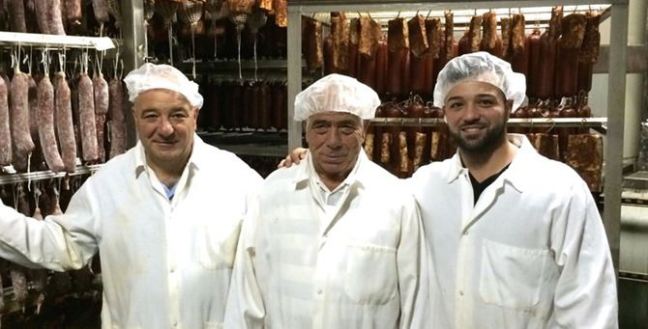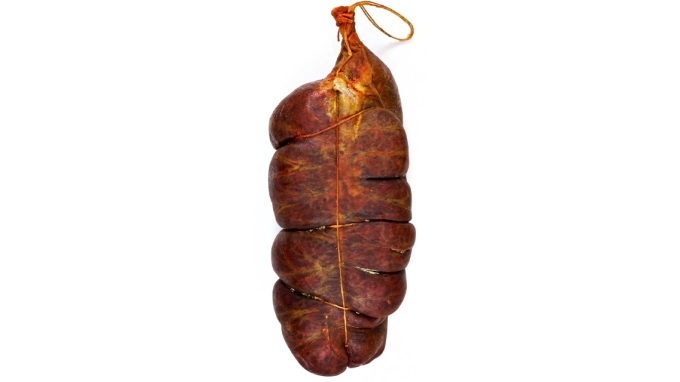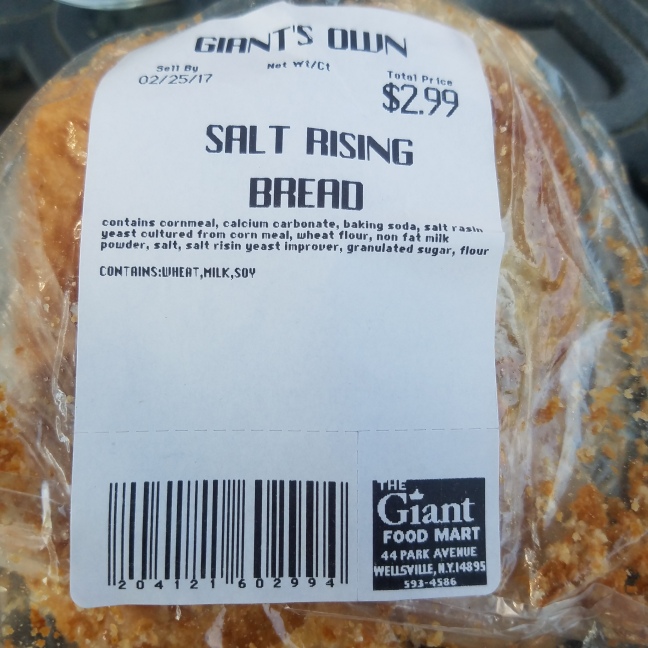With new regulations and industry changes, it is vital for processors to stay on top of government demands to ensure the safety of the food they are manufacturing, producing, selling and distributing. Coming off of its successful 2016 show that had record-breaking attendance and the largest exhibit hall to-date, the Food Safety Summit Conference & Expo is a solutions-oriented program where important issues are discussed.
The Food Safety Summit takes place May 8-11 at the Donald Stephens Convention Center in Rosemont, Ill. The show is designed to meet the educational and informational needs of the entire food industry. It provides a three-day comprehensive educational program where dairy plant personnel can learn from experts, trainers, and exchange ideas and solutions. The show is organized by BNP Media, publisher of Dairy Foods.
Attendees will learn the tools and latest information needed to execute changes in regulation and navigate new and existing challenges. The show will offer many new education sessions and features, including a keynote presentation on hot topics in food safety. See more new features below.
What’s New? Summit Standouts for 2017
- 6 FSPCA, AFDO and NEHA certification courses offered
- Half-day listeria control workshop
- Extended exhibit hall hours
- Keynote presentation on hot topics in food safety (Wed., May 10, at 9:15 a.m.)
- Expanded solutions stage schedule
- Newly explored case studies
- Over 200 solutions providers
Six certification courses will be offered for attendees on Monday, May 8, at 9 a.m., including Produce Safety Alliance Grower Training; FSPCA Foreign Supplier Verification Programs Training; Professional Food Safety Auditor Training; and Preventive Controls for Human Foods. Early registration is encouraged. On Tuesday, May 9 (starting at 8 a.m.), several workshops will be available, with topics ranging from the Latest in Listeria Control; Integrated Food Safety System Update; and A Guide to Success as a Food Safety Professional.
Educational sessions start on Wednesday, May 10 through Thursday, May 11, from 8 a.m. to 5:30 p.m. Morning sessions on Wednesday feature experts representing each sector of the industry (retail, foodservice, manufacturing, distribution and regulatory). Other sessions include topics such as foodborne outbreaks, hazard analysis, food safety crisis communication planning; the importance of the environmental component of foodborne illness outbreak investigations; food defense perspectives; how food can be contaminated with allergens; federal menu labeling requirements and claims; and case studies from recent foodborne illness outbreaks.
Attendees can also visit the free Solution Stage Theater presentations on the exhibit hall floor to hear experts lecture on food safety issues and technologies. Topics of interest include how to validate your metal detector; Reduce Risk of Food Contamination with Hygienically Designed Drainage Solutions; Executing a Cost Effective Food Labeling Solution for Grocery & Convenience Stores; and the Impact of Clean Food Sourcing (organic, non-GMO, etc.) on the Supply Chain.
Other event highlights include:
- The Food Safety Summit Gives Back Networking Reception Sani Awards at 5:30 p.m. on Wednesday. The Food Safety Summit partners again with Feeding America to join the mission to feed America’s hungry.
- Town Hall: A candid conversation with top regulators at 9:15 a.m. on Thursday. Attendees have the opportunity for a candid and interactive discussion on the latest food safety issues with key officials representing the FDA, USDA, AFDO and CDC.
- The NSF Food Safety Leadership Awards at 9:15 a.m. on Thursday. The NSF International Food Safety Leadership Awards recognize individuals and organizations that have made a lasting impact on food safety.
For more exhibitor and attendee information, travel arrangements, directions, registration links and more, visit www.foodsafetysummit.com.
Company/Organization……………… Booth #
ACO Polymer Products, Inc…………….. 625
Alchemy Systems………………………… 104
American Proficiency Institute………….. 222
AMP International…………………………. 324
Anritsu Infivis Inc…………………………. 922
Art’s Way Scientific, Inc…………………. 426
ASI Food Safety………………………….. 205
Association of Food and Drug Officials.. 436
BakeWatch………………………………… 830
BarTender by Seagull Scientific………… 209
Best Sanitizers, Inc………………………. 637
Bia Diagnostics / Elution Technologies.. 517
BioControl Systems, Inc………………… 827
Bioionix, Inc……………………………….. 227
bioMeriuex, Inc……………………………. 408
Biomist……………………………………… 207
Bird Buffer, LLC…………………………… 804
BluLine Solutions………………………….. 336
Bootie Butler……………………………….. 525
BRC Trading Limited……………………… 513
Brother Mobile Solutions…………………. 314
Buckhorn Inc………………………………. 926
Bunting Magnetics Co……………………. 705
Bureau Veritas North America, Inc…….. 109
Camfil………………………………………. 726
Cargo Data Corporation…………………. 627
Centers for Disease Control
and Prevention NCEH / ATSDR…….. 706
Certified Laboratories…………………….. 516
ChemStation International, Inc…………. 815
Cherney Microbiological Services, Ltd… 116
ClorDiSys Solutions Inc…………………. 630
Columbia Food Laboratories……………. 131
ComplianceMetrix, Inc…………………… 608
CompWalk…………………………………. 127
Contec, Inc………………………………… 413
Cooper-Atkins Corporation………………. 904
Copesan Specialists in Pest Solutions… 614
Covance……………………………………. 508
Deibel Laboratories……………………….. 236
Detectamet Detectable Products Inc…. 536
Diagraph Marking & Coding…………….. 137
Dicentra Safety Quality Compliance…… 215
DNV GL Business Assurance USA, Inc. 509
DQS Inc……………………………………. 332
Eagle Protect PBC……………………….. 214
Elisa Technologies, Inc………………….. 309
EMNS, Inc. (Global Supplier Quality
Assurance – GSQA)……………………. 805
Emport LLC………………………………… 327
EMSL Analytical, Inc…………………….. 134
Environize US……………………………… 914
Eurofins…………………………………….. 523
FDA / Center for Food Safety and
Applied Nutrition………………………… 125
FlexXray……………………………………. 210
Food Processing Suppliers Association. 713
Food Quality & Safety Magazine……….. 537
Food Safety and Quality Systems, LLC. 712
Food Safety Magazine…………………… 217
Food Safety Net Services………………. 323
Food Safety News……………………….. 910
FoodLogiQ…………………………………. 613
Guardian Ozone…………………………… 831
Hardy Diagnostics………………………… 126
Heateflex Corporation……………………. 130
Hollison, LLC………………………………. 233
Hygiena…………………………………….. 723
ICIX…………………………………………. 231
IFPTI………………………………………… 432
IFS………………………………………….. 112
Illinois Institute of Technology, Institute
for Food and Health……………………. 434
Integrated Control Corp………………….. 423
International Association for Food Protection 615
Intertek……………………………………… 433
Invisible Sentinel………………………….. 816
ITEC America……………………………… 530
Kestrel Management LLC……………….. 708
Kitchen Brains…………………………….. 122
Lenova Inc…………………………………. 717
LGC Standards……………………………. 325
Log10, LLC………………………………… 411
Loma Systems……………………………. 230
Loveshaw………………………………….. 725
LPA Wireless………………………………. 308
LRQA……………………………………….. 326
Lubriplate Lubricants Company………… 317
MadgeTech………………………………… 524
Magnifi Group……………………………… 714
Mars Air Systems………………………… 435
Matrix Industrial Control Systems Inc… 507
Matrix Product Development……………. 724
Maxair Systems…………………………… 824
McCloud Services………………………… 634
Merieux NutriSciences…………………… 417
Meritech……………………………………. 605
Mettler Toledo Product Inspection……… 204
Michigan State University Online
Master of Science in Food Safety…… 212
Micreos…………………………………….. 707
Micro Essential Laboratory……………… 526
Microbac Laboratories……………………. 826
Moltox………………………………………. 515
Multi-Lab……………………………………. 237
NEHA……………………………………….. 415
Neogen Corporation………………………. 612
Northland Laboratories…………………… 206
Novolyze, Inc……………………………… 631
NSF International…………………………. 623
Oceasoft Inc………………………………. 431
OptiPure……………………………………. 225
Ozone International LLC…………………. 731
Paksense…………………………………… 531
Pall Corporation…………………………… 306
Perry Johnson Registrars Food Safety Inc 133
PestWest USA LLC………………………. 437
Procuro, Inc……………………………….. 223
Pure Bioscience…………………………… 313
Pureline…………………………………….. 716
Puritan Medical Products Co LLC……… 226
Q Laboratories, Inc……………………….. 110
Quality Assurance & Food Safety Magazine 611
R-Biopharm………………………………… 135
(Radiant Industrial Solutions) RadiantUV 331
Radio Frequency Co., Inc………………. 310
Rasco Industries, Inc……………………. 335
Regal Packaging Services………………. 213
Rentokil – Steritech……………………….. 123
ReposiTrak…………………………………. 427
Rite-Hite……………………………………. 315
RizePoint…………………………………… 527
RMD Technologies, LLC………………… 124
Roka Bioscience………………………….. 405
Romer Labs……………………………….. 322
Safe Food Resources……………………. 234
Safe Quality Food Institute (SQFI)…….. 409
Safety Chain Software…………………… 416
Sample6……………………………………. 108
Sani Professional…………………………. 305
Sani Station………………………………… 532
ScanTech Sciences………………………. 111
Sciex………………………………………… 823
Sentinel Lubricants……………………….. 817
SGS NA Inc……………………………….. 232
Siemens PLM Software………………….. 514
Somax, Inc………………………………… 425
Southern Perfection Fabrication Holding 530
Spartan Chemical Company……………. 211
Spraying Systems Co……………………. 117
Sterilex Corporation………………………. 337
Stop Foodborne Illness………………….. 208
Summit……………………………………… 604
T3 Technologies, Inc……………………… 606
TandD US, LLC…………………………… 730
Tegam Inc………………………………….. 930
Testo Inc…………………………………… 333
The Industrial Fumigant Compant……… 115
Thermal Remediation from Temp-Air….. 113
Thermo Fisher Scientific…………………. 510
ThermoWorks……………………………… 704
Third Wave Bioactives…………………… 224
Total Lubricants…………………………… 709
TraceGains…………………………………. 105
TRI Air Testing…………………………….. 107
TRSA……………………………………….. 414
Tuv Nord USA…………………………….. 304
U.S. Pharmacopeial Convention……….. 727
USDA Food Safety and Inspection Service 632
USDA Food Safety Research
Information Office……………………… 424
Verse Solutions……………………………. 609
Webber/Smith Associates, Inc…………. 505
Xcluder / Global Material Technologies.. 114
Zebra Technologies 624










 Another rare treat hailing from the Amish country in upstate New York. Tasty, cheesy and you’d better toast and add butter to it, if u wanna enjoy it. Salt Rising Bread from one of the three producers I know of. (two of them make it well and this is one)
Another rare treat hailing from the Amish country in upstate New York. Tasty, cheesy and you’d better toast and add butter to it, if u wanna enjoy it. Salt Rising Bread from one of the three producers I know of. (two of them make it well and this is one)